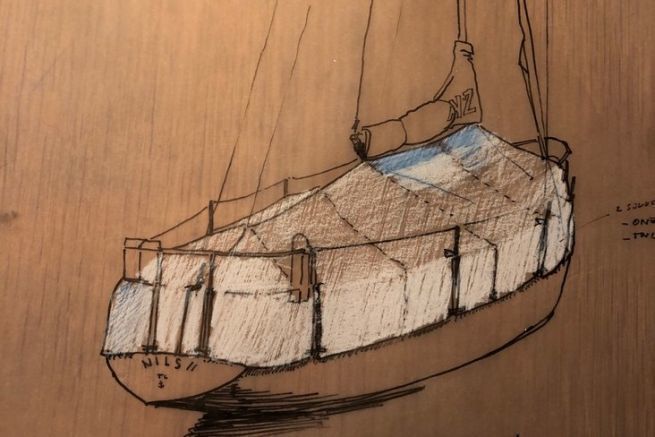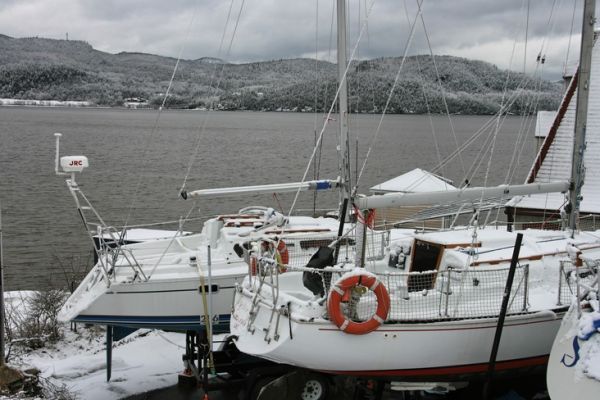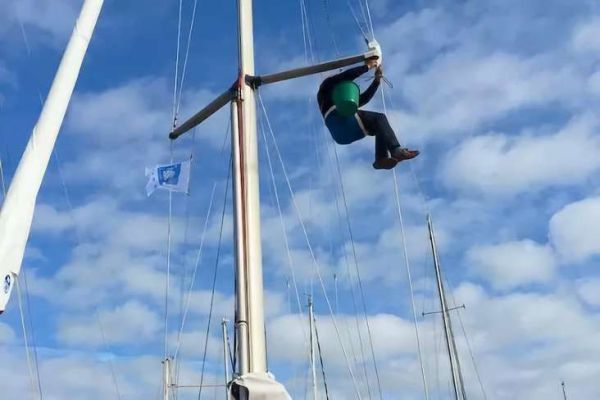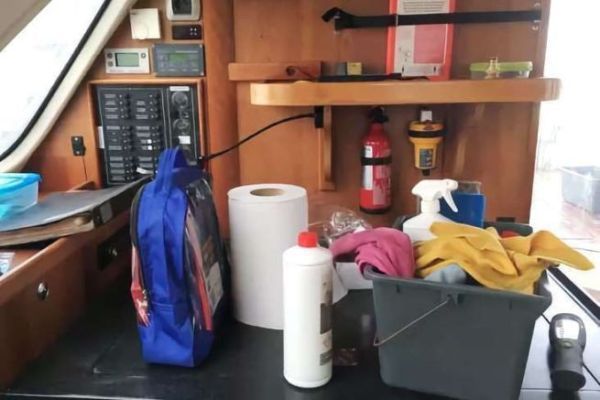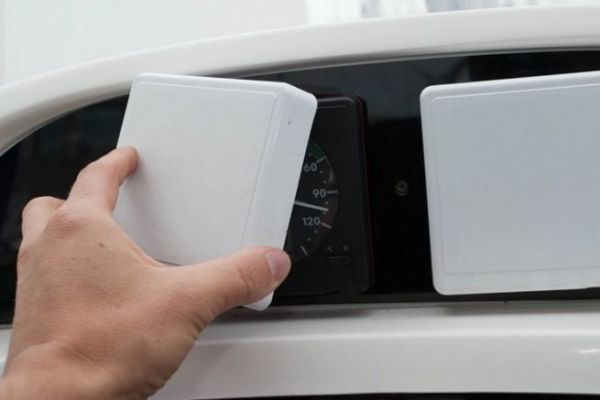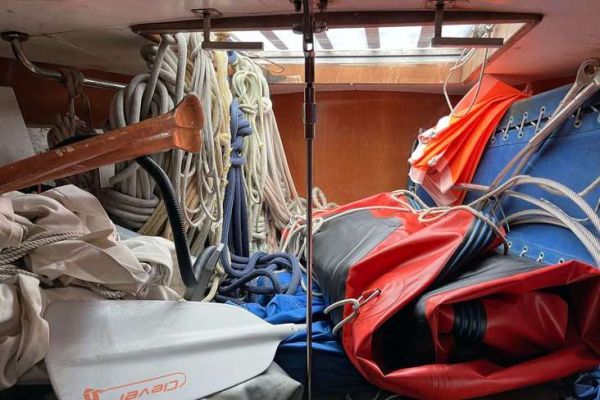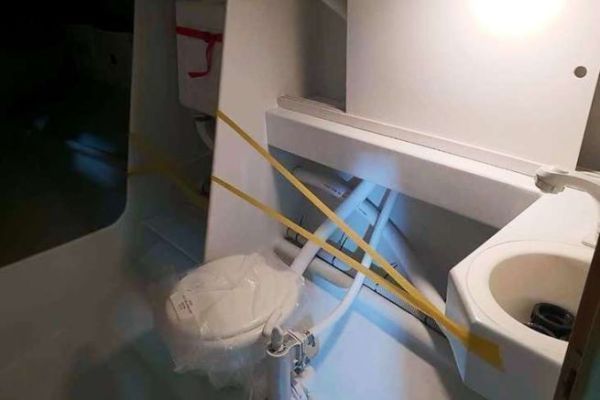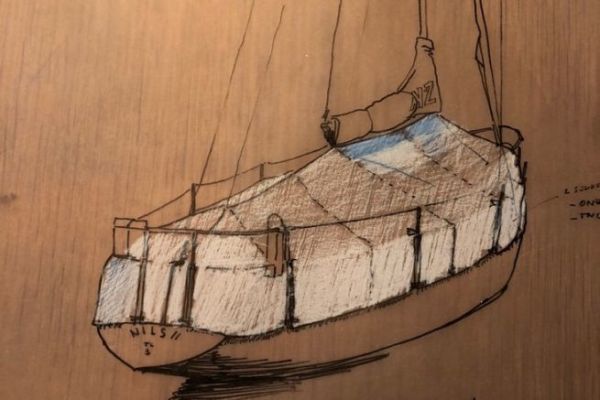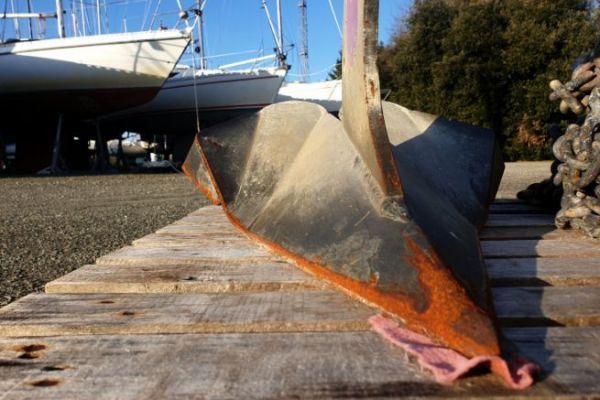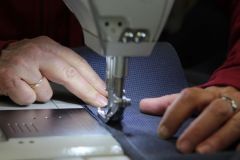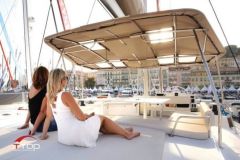To design the new cover of his sailboat Nils 2, a 1968 Tina, Antoine thought long and hard. He shares this long process with us.
I was looking for solutions that met my objectives:
- Lightness if the pole is too heavy, you won't keep it on board. You have the impression that you are burdening your boat with a useless element. So, you leave it at the home port, waiting for the boat to return the following winter. You will therefore only use this protection for the long wintering periods, but not for the short ones, when the boat is under the sun and the seagullsâ?¦
- Footprint if the tarpaulin is too big in volume, it is unimaginable to mobilize an entire trunk for a "sail" that is "useless". You will leave it in the port in this case too.
- Easy to install if the set-up is too complicated, if it takes too long, you will give up long before you get the bag out of the trunk. Especially if it's a short stand-by period.
All this is a pity, because a boat protected by a tarpaulin - once rinsed, ages much less quickly. Everything is better with a cover over the boat: protection of the teak, varnishes, ventilation with the portholes that can remain ajar and all kinds of attacks from seagulls and other sandy windsâeuros¦
An old tarp that is much too heavy
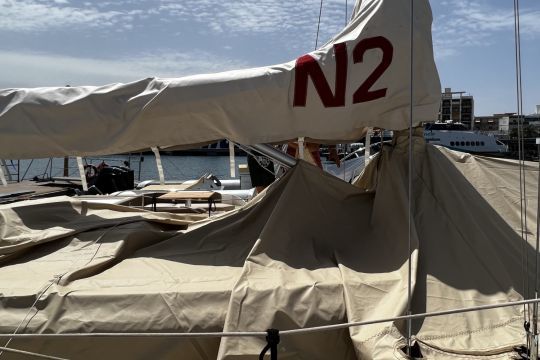
When I bought my 1968 Tina, I inherited a protective cover that was a good 15 years old. The bag was bigger than a big spinnaker, but not compactable. Moreover, the weight of this tarp was unimaginable: a good thirty kilos. I never weighed it, but I had to think twice about presenting it on deck. The thick cotton fabric was reinforced at the rubbing points with plastic sheeting, just to make it heavier. No flexibility in the set up, as the fabric is not stretchy at all, and no waterproofing.
A true lightweight outdoor fabric
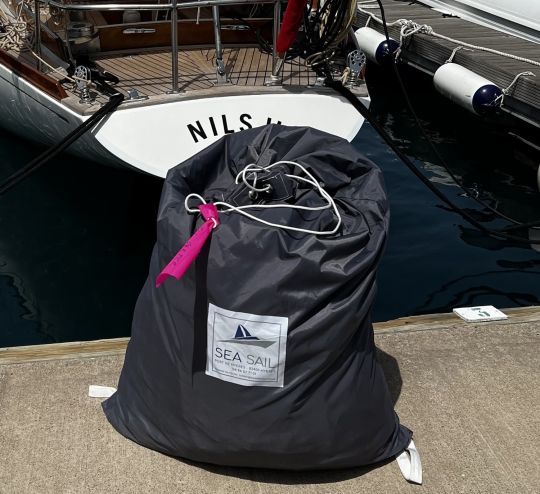
After looking at mountain tents and modern bivouac equipment, I started dreaming of another solution than this big pile of cotton. I found the ideal fabric at Serge Ferrari: the Stamoid Smart 1. Extraordinary strength, weight divided by at least three, elasticity allowing for flexibility in assembly and a perfect seal - apart from the seams. In beige - sand - perfectly "classic", here is the Nils 2 ready to face the winter storms.
A professional master sailmaker
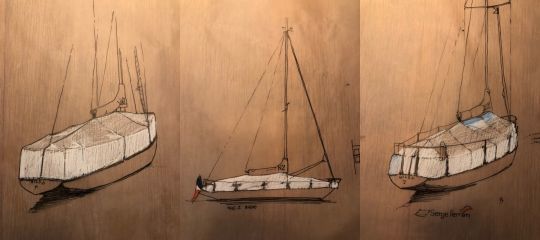
To realize this project, I called Olivier Martin from Seanergie Nautic in the port of Hyères. Olivier is a versatile sailmaker, who remains a great specialist in classic sailboat covers: Ikra, Franceâeuros¦ He is also the designer of the Nils 2 sun awning. I designed the awning of my dreams and Olivier re-interpreted the drawings to make them realizable.
Installation under the boom, but at what height?
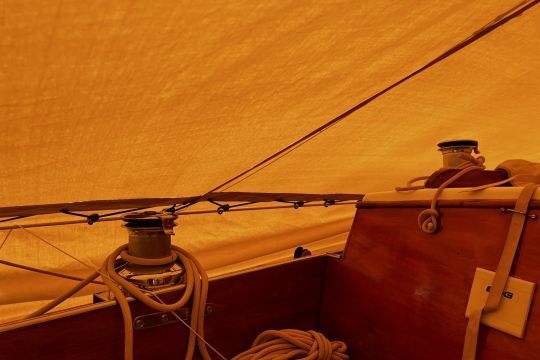
We wondered about the height of the tarp above the deck. An installation above the dies creates too much friction on the stanchion heads, and too much overall dunnage. It also does not allow for fenders to be left in place.
So I decided to use a tarp that arrives on the intermediate die. This allows the cover to be stretched before it falls back on the fargue, because with a varnished teak fargue, it is impossible to stretch rubber bands on it. A small flap with an elastic band ensures the final protection with the hull, without it flapping in the wind, which is a disaster for the paint!

As the tarpaulin is made in one piece, it is also necessary to decide on the number of perpendicular zips: lower forestay, mast, mainsheet. You also have to think about a zipped entrance door, like the one on a tent, to come and visit the boat when it is covered. I hadn't thought of this and it doesn't exist on the Nils 2!
Finally, the last question to ask is the exit of the mooring lines, at the front and at the back. Having had the cover made during the winter, while the boat is dry on a bank, I completely forgot about this point and the mooring lines lift the flap at the fairleads. It's a modification that will have to be done again, but it's still possible.
And in use?
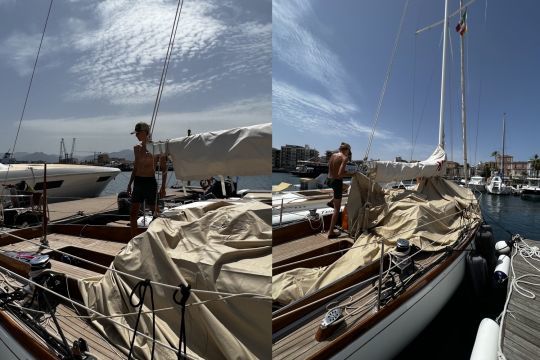
I was amazed at how easy it was to set up due to the lightness of the fabric. Once the tarp was out of the bag and spread out on the deck, it took the two of us about 15 minutes to place and tension it, and that was without any perilous acrobatics outside the lines. To save time, I should mark the front and back with a stencil or color.
In the end, the project is beautiful. All of Oliver Martin's little tricks keep it taut like a tent, which has the advantage of preventing it from flapping. And above all to make the project very elegant, isn't that the most important thing?

 /
/ 